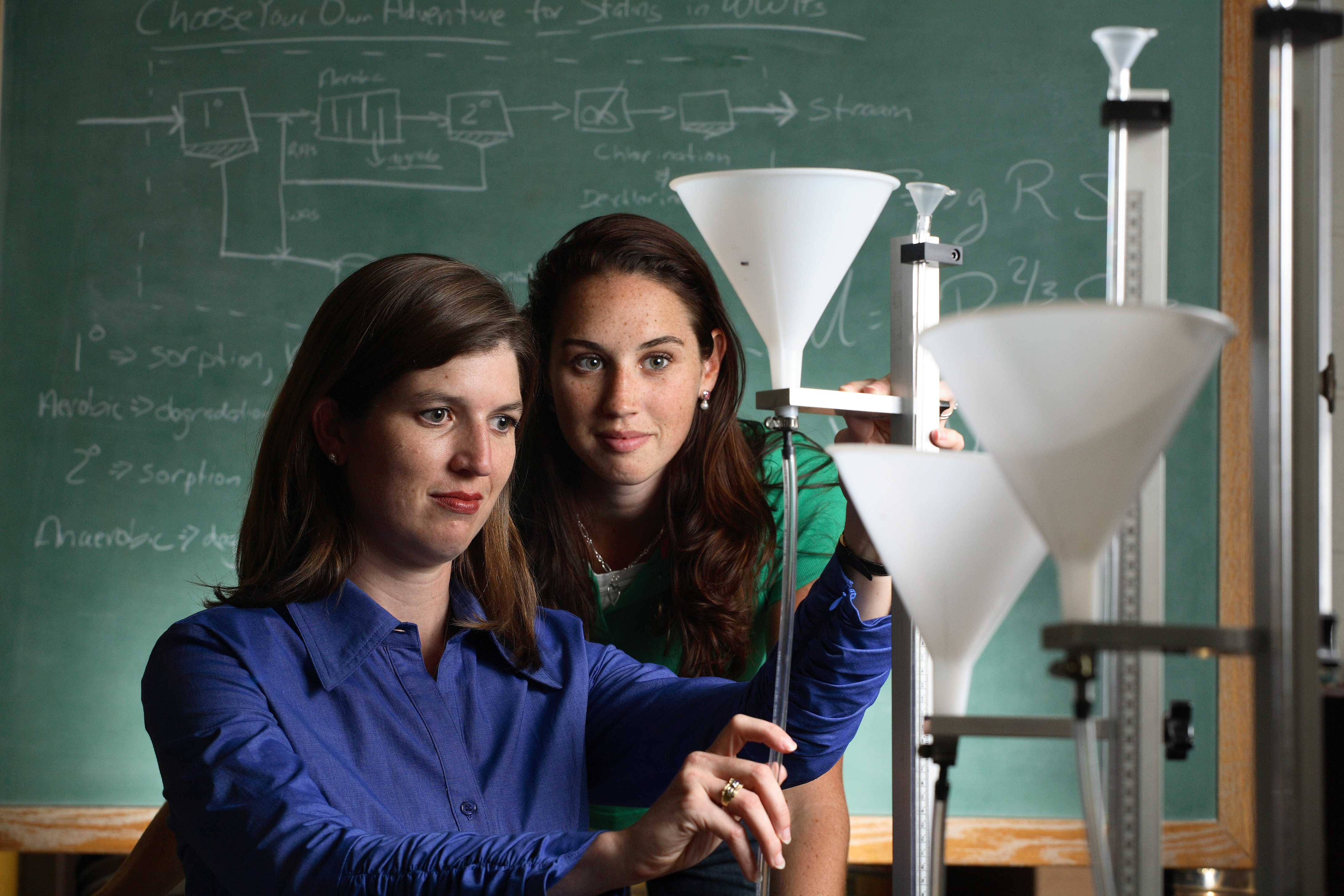February 28, 2011 — Deciding the fate of an aging dam can be a difficult process. Dam removal can cost upwards of $300,000, while expensive problems can persist when a crumbling dam is left in place. So what is the best way to deal with this predicament?
That's what Joanna Curran of the University of Virginia School of Engineering and Applied Science is trying to find out.
Curran, an assistant professor of civil and environmental engineering, recently received a grant from the National Science Foundation for her research project, "Rethinking Dredging: Phasing Small Dam Deconstruction to Allow Sediment Releases Without Harming Downstream Ecosystems." According to Curran, her project was inspired by the widespread quandary of dealing with dam removal.
"There are millions of small dams that range in size throughout this country," she said. "They have a huge impact on watershed. Some of these dams are very old and they get left in place over time. Some of these dams become very unsafe and are crumbling, and people live close by them. These dams need to be dealt with. We want to take out these dams, have sediment flow downstream, rebuild banks and create a better habitat."
For her research, Curran will examine the downstream effects of dam deconstruction. She believes that through certain deconstructions, some impounded sediments may be released downstream, increasing the habitat created by the form and structure of the channel and ultimately improving the ecosystem.
Curran expects her project to take roughly two years to complete, and the work is currently being done in a controlled 11-meter-long indoor flume. Kristen Cannatelli, a Ph.D. candidate in civil engineering, will assist Curran, along with a team of undergraduate students.
According to Curran, a U.Va. faculty member since 2007, the results of her research would have immense benefits for departments of conservation across the country.
"The results of this study will provide communities with better ways to deal with dams," she said. "They will understand how much sediment may go downstream through this kind of removal."
This is not Curran's first experience with studying the effects of dam removal. Between 2004 and 2006, she received a grant from the Texas Advanced Technology Program for a project titled "Model Analysis of the Effects of Small Dams on the Guadalupe River."
For Curran, being able to create research that can help with the way communities deal with the environment has been a dream come true.
"When I was deciding what to do with my career, I knew I wanted to be involved with the environment and I thought that engineering could allow me to make an impact with others," she said. "If you listen to the media, you see that there are a lot of environmental questions that need answering. And in this field, you get to help answer those questions."
That's what Joanna Curran of the University of Virginia School of Engineering and Applied Science is trying to find out.
Curran, an assistant professor of civil and environmental engineering, recently received a grant from the National Science Foundation for her research project, "Rethinking Dredging: Phasing Small Dam Deconstruction to Allow Sediment Releases Without Harming Downstream Ecosystems." According to Curran, her project was inspired by the widespread quandary of dealing with dam removal.
"There are millions of small dams that range in size throughout this country," she said. "They have a huge impact on watershed. Some of these dams are very old and they get left in place over time. Some of these dams become very unsafe and are crumbling, and people live close by them. These dams need to be dealt with. We want to take out these dams, have sediment flow downstream, rebuild banks and create a better habitat."
For her research, Curran will examine the downstream effects of dam deconstruction. She believes that through certain deconstructions, some impounded sediments may be released downstream, increasing the habitat created by the form and structure of the channel and ultimately improving the ecosystem.
Curran expects her project to take roughly two years to complete, and the work is currently being done in a controlled 11-meter-long indoor flume. Kristen Cannatelli, a Ph.D. candidate in civil engineering, will assist Curran, along with a team of undergraduate students.
According to Curran, a U.Va. faculty member since 2007, the results of her research would have immense benefits for departments of conservation across the country.
"The results of this study will provide communities with better ways to deal with dams," she said. "They will understand how much sediment may go downstream through this kind of removal."
This is not Curran's first experience with studying the effects of dam removal. Between 2004 and 2006, she received a grant from the Texas Advanced Technology Program for a project titled "Model Analysis of the Effects of Small Dams on the Guadalupe River."
For Curran, being able to create research that can help with the way communities deal with the environment has been a dream come true.
"When I was deciding what to do with my career, I knew I wanted to be involved with the environment and I thought that engineering could allow me to make an impact with others," she said. "If you listen to the media, you see that there are a lot of environmental questions that need answering. And in this field, you get to help answer those questions."
— By Andrew Clark
Media Contact
Article Information
February 28, 2011
/content/rethinking-dredging-uva-civil-engineer-helps-decide-fate-dams

